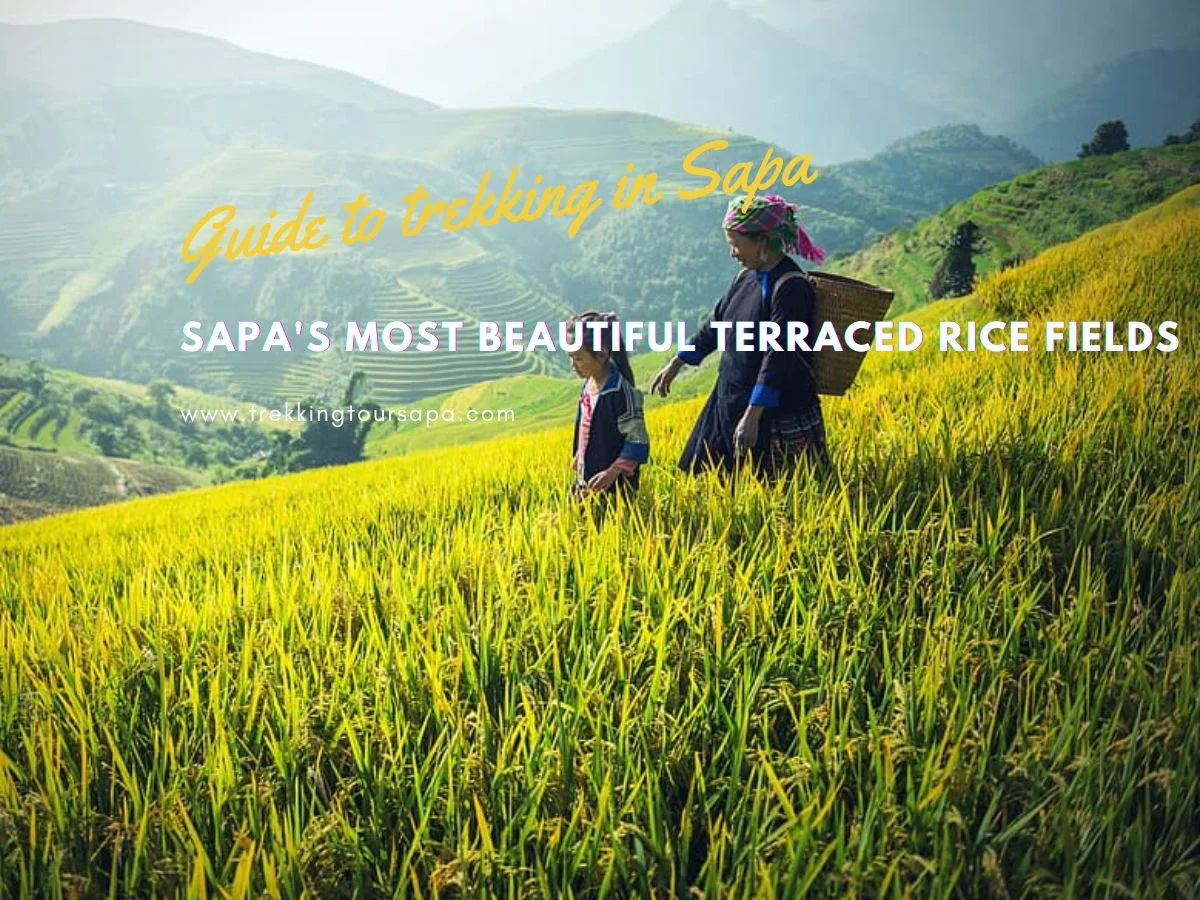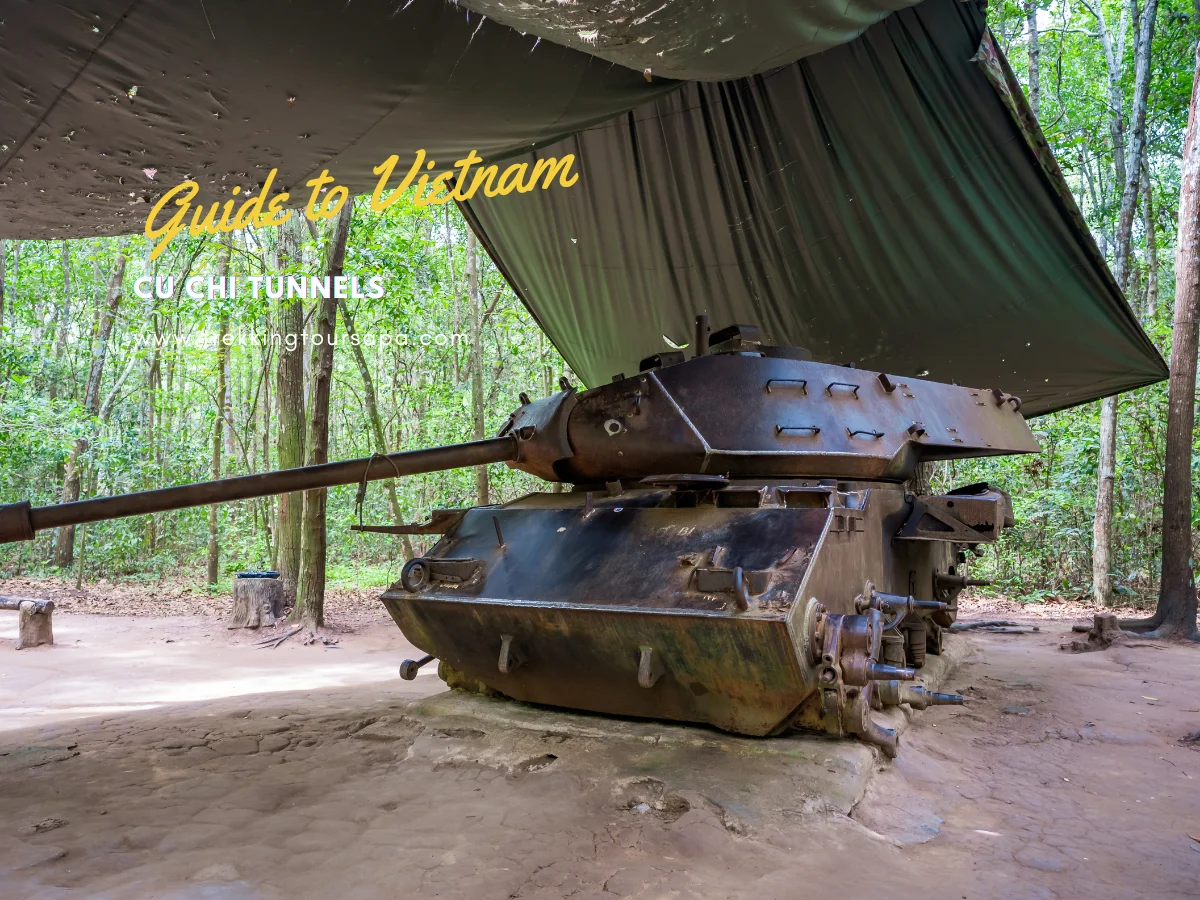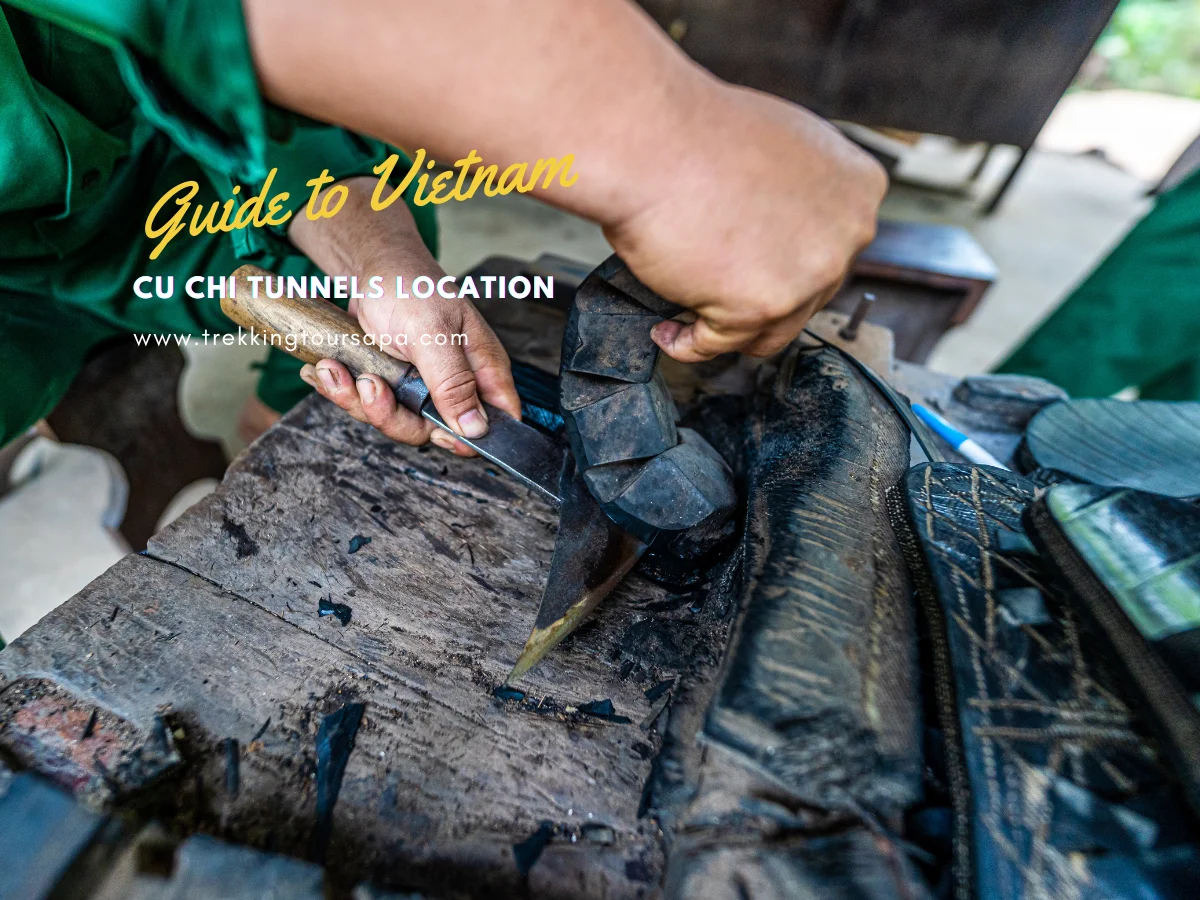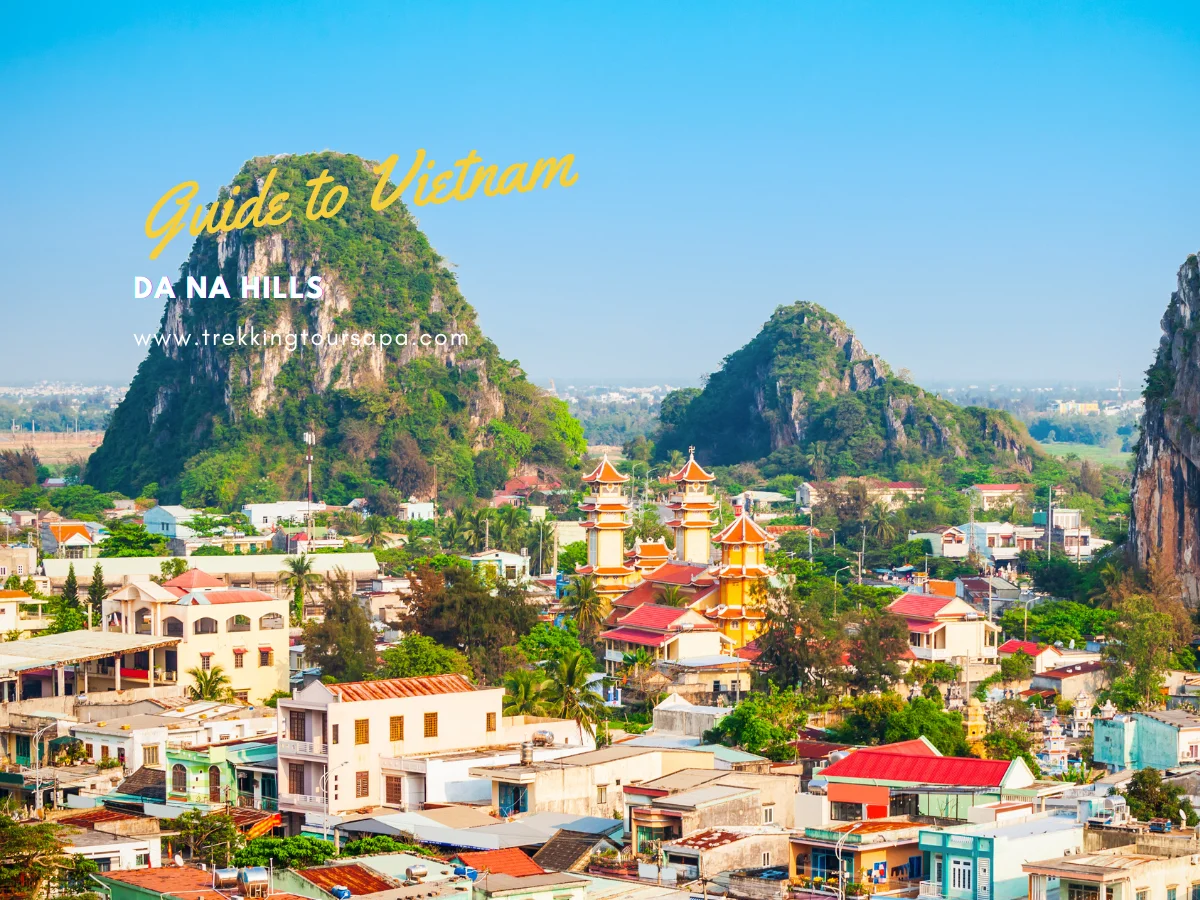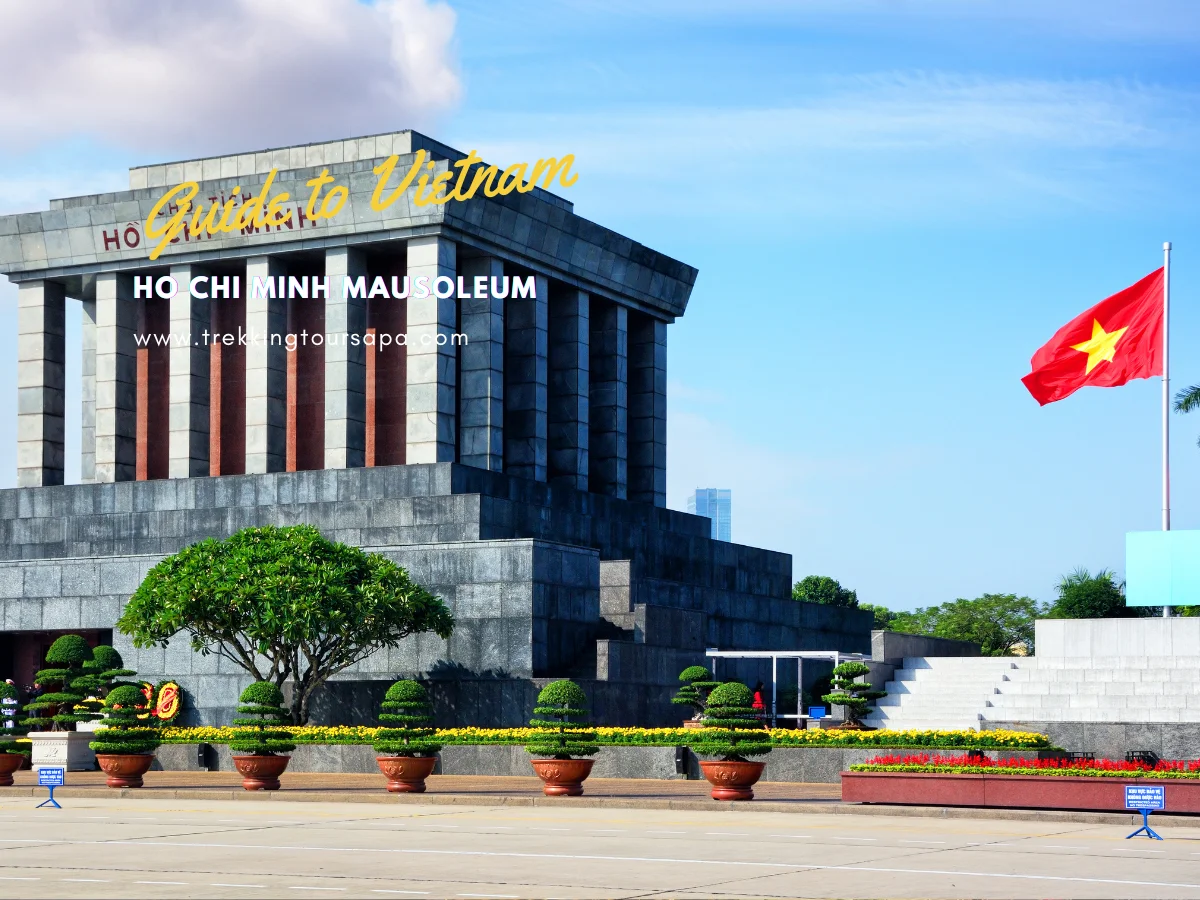You’re a traveler who craves adventure and longs for a sense of freedom. You seek out destinations that offer natural beauty, cultural heritage, and opportunities to explore. That’s why Sapa in Vietnam should be on your bucket list. This mountainous region is known for its stunning terraced rice fields that cascade down the hillsides like stairways to heaven.

The history of these fields dates back centuries, when ethnic minority groups began carving terraces into the mountains to grow crops such as rice, corn, and beans. Today, Sapa‘s terraced rice fields are not only a source of food but also a symbol of the region’s cultural identity and a popular tourist attraction. As you venture through this picturesque landscape, you’ll discover the beauty of nature intertwined with the rich history and traditions of the local people.
Table of Contents
ToggleOverview of Sapa’s Natural Beauty and Cultural Heritage
You’ll love exploring the natural beauty and cultural heritage of this stunning region. Sapa is a small town in the northwestern part of Vietnam that has become popular among tourists for its picturesque landscape, particularly its terraced rice fields. The town sits amidst rugged mountains, with some peaks reaching as high as 3,143 meters above sea level. The terrain is perfect for trekking and hiking, offering visitors a chance to immerse themselves in nature while taking in breathtaking views.

Sapa‘s cultural preservation efforts have also contributed to its appeal. The town is home to various ethnic minority groups who have lived there for generations. These groups have managed to maintain their traditions despite modernization and globalization. Visitors can witness their way of life by visiting local markets or attending festivals such as the Love Market Festival and Bac Ha Market. Ecotourism development has helped promote sustainable tourism practices while preserving the environment and supporting local communities’ livelihoods.
History of Terraced Rice Fields in Sapa
You’re about to learn the fascinating history behind these breathtaking works of agricultural engineering that have left a lasting impact on the local culture and economy. The terraced rice fields in Sapa were created by indigenous Hmong, Dao, and Giay communities over 300 years ago. These tribes migrated from southern China to northern Vietnam in search of fertile land for farming. They found it in the high mountain ranges of Sapa, where they began cultivating rice using traditional techniques passed down from generation to generation.

The cultivation of rice on terraced fields is an incredible feat of human ingenuity and resilience. Here are four things you should know about their history:
- The construction process involved carving out tiered plots into mountainsides with rudimentary tools like hoes, spades, and baskets.
- The fields were irrigated using natural springs or streams from higher elevations through a system of bamboo pipes.
- Each terrace was designed to trap water at different levels so that each plot received enough moisture for optimal growth.
- This method allowed farmers to cultivate crops on steep slopes that would otherwise be unsuitable for agriculture while preserving the ecological balance of the area.
Despite advancements in technology and modern farming practices, many locals continue to use traditional methods to preserve their cultural heritage and maintain sustainable tourism practices. Today, visitors can witness the beauty and significance of these stunning landscapes while supporting local communities through responsible tourism initiatives.
Sapa 1 Day Tours
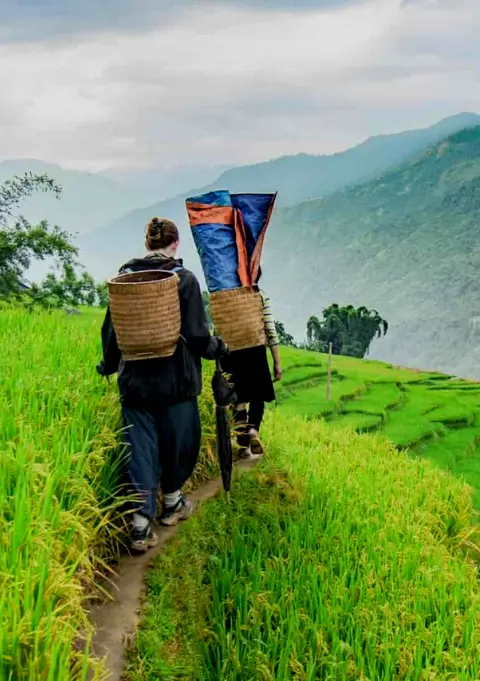
- 1 day experience
- Moderate to challenging
- Cultural immersion & active adventure
- Rice fields, valleys & villages
- Private tours
- Vegan-friendly
Sapa 2 Day Tours
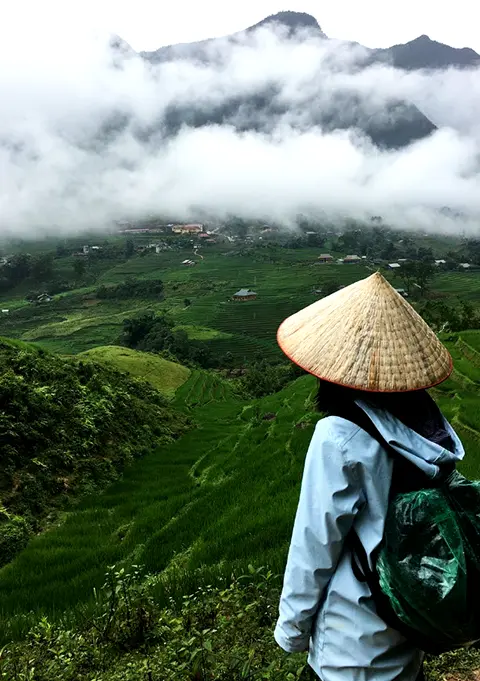
- 2 days 1 night experience
- Moderate to challenging
- Cultural immersion & active adventure
- Mountains, valleys, rice fields and villages
- Private tours
- Vegan-friendly
Sapa 3 Day Tours
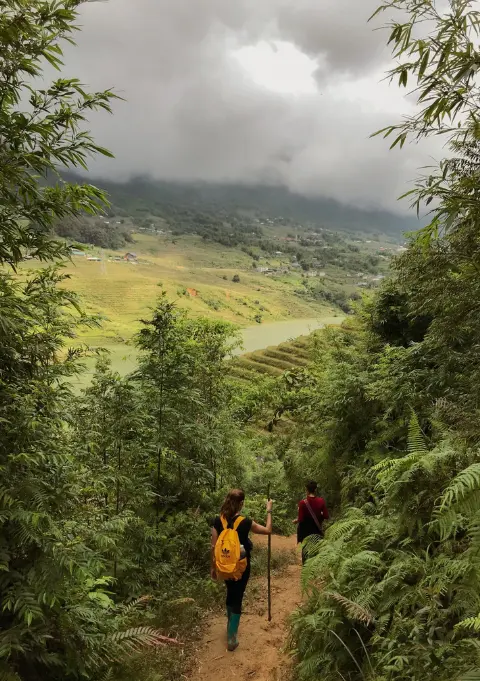
- 3 days 2 night experience
- Moderate to challenging
- Cultural immersion & active adventure
- Mountains, valley, rice fields & villages
- Private tours
- Vegan-friendly
Sapa 4 Day Tours
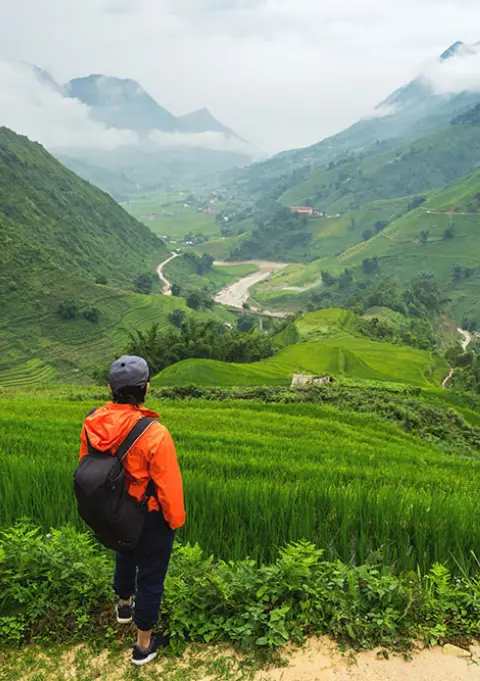
- 4 days 3 night experience
- Moderate to challenging
- Cultural immersion & active adventure
- Mountains, valleys, rice fields & villages
- Private tours – Less Touristic
- Vegan-friendly
Types of Rice Grown in Sapa
If you’re interested in learning about the different varieties of rice grown in this region, it’s worth noting that the types of rice cultivated on these terraced plots vary depending on factors such as elevation, soil quality, and climate. Some of the most common types of rice grown in Sapa include sticky rice, fragrant rice, and black rice. Sticky rice is a staple food in Vietnam and is often used to make traditional dishes like banh chung (sticky rice cake) or xoi (sticky rice with toppings). Fragrant rice has a distinct aroma and taste that makes it popular for use in soups or eaten plain with meals. Black rice has high nutritional value and is often used to make desserts like pudding or cakes.
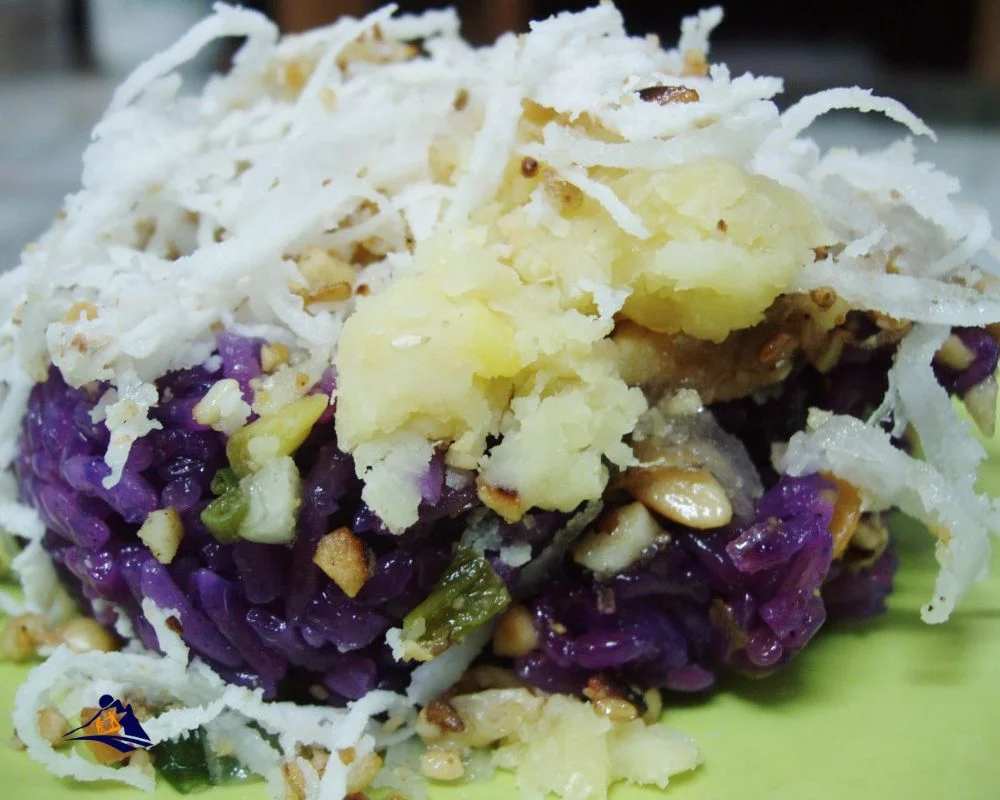
Rice cultivation techniques have been passed down from generation to generation in Sapa, resulting in unique flavors and textures for each type of rice. In fact, there are even Rice Festivals held annually to celebrate the harvest season and honor the hard work put into cultivating these precious crops. If you have the opportunity to attend one of these festivals, you’ll get a chance to try some delicious local dishes made with freshly harvested rice while experiencing the vibrant culture of Sapa firsthand. With so many different varieties of locally-grown rice available, there’s no doubt that Sapa’s terraced fields are truly a treasure trove for foodies who crave authentic culinary experiences!
Best Time to Visit Sapa’s Terraced Rice Fields
Don’t miss out on the breathtaking scenery and vibrant culture of this region by planning your visit during the optimal time to witness the lush, green landscape of rice cultivation. The best time to visit Sapa’s terraced rice fields is from September to November. This is when the rice paddies turn a brilliant shade of green, creating a stunning contrast against the surrounding mountains and valleys.
- Imagine yourself standing amidst a sea of emerald green terraced rice paddies stretching as far as your eyes can see.
- Feel the cool breeze brushing past your face, carrying with it the sweet fragrance of ripening rice.
- Experience the local festivals that take place during this period, such as the Sapa Autumn Festival or Love Market Festival, which offer an authentic glimpse into traditional ethnic minority cultures.

Visiting during this season also means you’ll avoid monsoon season and its associated risks like heavy rainfall and landslides. So pack your bags and get ready for an unforgettable adventure in one of Vietnam’s most picturesque regions!
Trekking Options for Exploring the Fields
If you’re planning to explore Sapa’s most beautiful terraced rice fields, there are a few things you should know about trekking options. Firstly, you can choose between guided tours and self-guided options depending on your preference for independence or guidance. Additionally, be prepared to encounter varying levels of difficulty and duration depending on the route you take, so plan accordingly and don’t forget to bring appropriate gear!
Sapa 1 Day Tours

- 1 day experience
- Moderate to challenging
- Cultural immersion & active adventure
- Rice fields, valleys & villages
- Private tours
- Vegan-friendly
Sapa 2 Day Tours

- 2 days 1 night experience
- Moderate to challenging
- Cultural immersion & active adventure
- Mountains, valleys, rice fields and villages
- Private tours
- Vegan-friendly
Sapa 3 Day Tours

- 3 days 2 night experience
- Moderate to challenging
- Cultural immersion & active adventure
- Mountains, valley, rice fields & villages
- Private tours
- Vegan-friendly
Sapa 4 Day Tours

- 4 days 3 night experience
- Moderate to challenging
- Cultural immersion & active adventure
- Mountains, valleys, rice fields & villages
- Private tours – Less Touristic
- Vegan-friendly
Guided Tours and Self-Guided Options
You can choose between taking a guided tour or exploring on your own to fully experience all that Sapa’s most beautiful terraced rice fields have to offer. Guided tours are ideal for those who want an in-depth knowledge of the area and its culture, as well as someone else doing the navigating and planning. These tours come in various options, from budget-friendly group tours to more luxurious private ones. Most guided tours offer transportation, accommodation, meals, and a local guide who speaks the language and knows the best spots for photo opportunities.

On the other hand, if you prefer to explore at your own pace without being bound by schedules or itineraries, self-guided options may be more suitable for you. You can rent a motorbike or bicycle and travel around Sapa’s surrounding villages with ease. There are plenty of homestays available should you wish to immerse yourself in local life. However, it is important to note that some roads can be challenging for novice riders due to their steepness or rough terrain. Nevertheless, whether you choose guided vs self-guided or budget vs luxury options when visiting these stunning rice fields, one thing is certain – you’ll be rewarded with breathtaking views that will stay with you forever!
Sapa 1 Day Tours

- 1 day experience
- Moderate to challenging
- Cultural immersion & active adventure
- Rice fields, valleys & villages
- Private tours
- Vegan-friendly
Sapa 2 Day Tours

- 2 days 1 night experience
- Moderate to challenging
- Cultural immersion & active adventure
- Mountains, valleys, rice fields and villages
- Private tours
- Vegan-friendly
Sapa 3 Day Tours

- 3 days 2 night experience
- Moderate to challenging
- Cultural immersion & active adventure
- Mountains, valley, rice fields & villages
- Private tours
- Vegan-friendly
Sapa 4 Day Tours

- 4 days 3 night experience
- Moderate to challenging
- Cultural immersion & active adventure
- Mountains, valleys, rice fields & villages
- Private tours – Less Touristic
- Vegan-friendly
Difficulty Levels and Duration
Get ready for an adventure that will challenge your skills and leave you awestruck as you explore the varying difficulty levels and durations of trekking through the lush green countryside. Balancing physical challenge and time management is crucial when exploring Sapa’s terraced rice fields, as each trail offers a unique experience. Here are some tips to help you maximize enjoyment and minimize stress during your trekking adventure:
- Start with a short hike: If this is your first time trekking, it’s best to start with a shorter route to avoid exhaustion or injury. A 2-3 hour hike on easy terrain can give you an idea of what to expect from longer treks.
- Plan according to weather conditions: The rainy season in Sapa lasts from May to September, so prepare accordingly if you plan on visiting during this time. Slippery trails can make even easy hikes more challenging, so wear proper footwear and bring rain gear.
- Hire a local guide: Not only will they be able to offer valuable insight into the area’s history and culture, but they can also guide you through the most scenic routes while ensuring your safety.
- Take breaks often: Don’t push yourself too hard! Take frequent rest stops along the way, hydrate regularly, and enjoy the stunning views around you.

With these strategies in mind, you’ll be able to fully appreciate Sapa’s most beautiful terraced rice fields without feeling overwhelmed by the challenge of hiking through them!
Photography Tips for Capturing the Beauty of the Fields
When it comes to capturing the beauty of Sapa’s terraced rice fields, choosing the best locations and angles is crucial. Look for spots that offer a panoramic view of the fields, such as viewpoints or high-altitude areas. As for lighting and weather considerations, aim for early morning or late afternoon shots when the light is softer and more flattering, and be prepared for sudden changes in weather conditions.
Best Locations and Angles
For capturing stunning shots of the landscape, head to these prime spots and snap away from different angles. The best locations for photographing Sapa’s terraced rice fields include:
- Muong Hoa Valley: A vast expanse of rice paddies, surrounded by mountain ranges, this valley offers plenty of opportunities to capture the beauty of Sapa’s landscape.
- Lao Chai Village: Located at the foot of Fansipan Mountain, this village is home to some of the most picturesque rice terraces in Sapa.
- Cat Cat Village: This village is known for its scenic waterfalls and terraced rice fields that stretch up into the mountains.
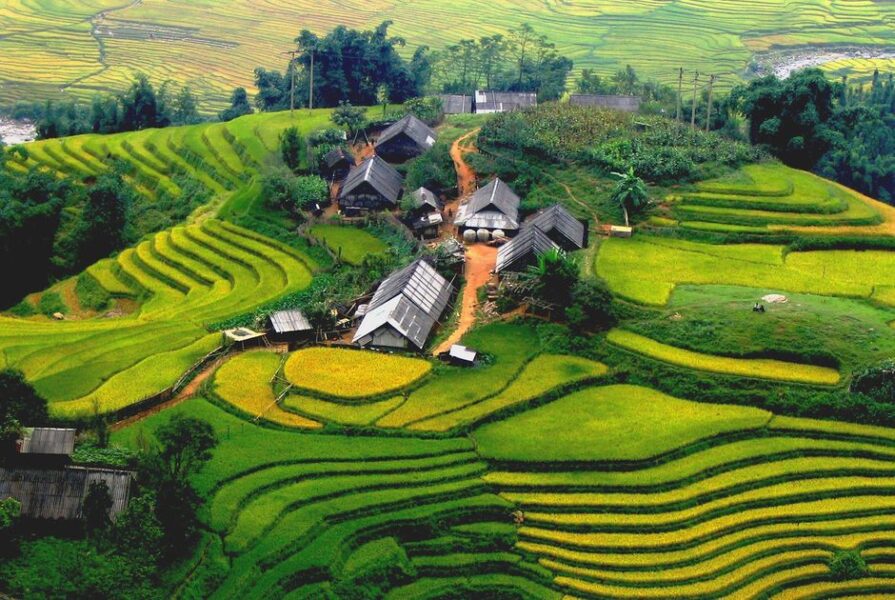
To get a unique perspective on the landscape, consider using drone photography. You’ll be able to capture sweeping aerial shots that showcase the scale and beauty of Sapa’s rice terraces. And while you’re there, don’t forget to indulge in some local cuisine – try dishes like thang co (a traditional soup made with horse meat) or xoi ngu sac (sticky rice with colorful toppings).
Lighting and Weather Considerations
You’ll want to pay attention to the lighting techniques and weather patterns when capturing Sapa’s most beautiful terraced rice fields. This will ensure that you capture the true essence of the landscape. Lighting can make or break a photo, so it’s important to choose your time of day wisely. Early morning or late afternoon light is best for capturing the rich colors and textures of the rice fields. The soft, warm light creates a magical atmosphere that can’t be replicated at any other time of day.
Sapa 1 Day Tours

- 1 day experience
- Moderate to challenging
- Cultural immersion & active adventure
- Rice fields, valleys & villages
- Private tours
- Vegan-friendly
Sapa 2 Day Tours

- 2 days 1 night experience
- Moderate to challenging
- Cultural immersion & active adventure
- Mountains, valleys, rice fields and villages
- Private tours
- Vegan-friendly
Sapa 3 Day Tours

- 3 days 2 night experience
- Moderate to challenging
- Cultural immersion & active adventure
- Mountains, valley, rice fields & villages
- Private tours
- Vegan-friendly
Sapa 4 Day Tours

- 4 days 3 night experience
- Moderate to challenging
- Cultural immersion & active adventure
- Mountains, valleys, rice fields & villages
- Private tours – Less Touristic
- Vegan-friendly
Weather patterns also play a crucial role in creating stunning photos of Sapa’s terraced rice fields. A cloudy or overcast sky can create a moody and dramatic effect, while clear skies allow for bright and vibrant colors to shine through. Rainy days offer unique opportunities for capturing reflections on the water-filled rice paddies. However, it’s important to avoid shooting during heavy rain as this could damage your equipment and make it difficult to get around on foot. Understanding how different weather conditions affect your photos will help you plan your shoot accordingly and create truly breathtaking images of this natural wonderland.
Cultural Experiences in Sapa
Immerse yourself in the rich cultural experiences of this mountainous region, from traditional markets to ethnic tribe villages. Sapa is not only known for its stunning terraced rice fields but also for its diverse cultural heritage that has been preserved over generations. Take a stroll around the bustling markets and try out some of the traditional cuisine made by local vendors. From steaming bowls of pho to savory banh mi sandwiches, there’s something for everyone’s taste buds.

In addition to exploring the local markets, be sure to check out one of Sapa’s many festivals. The different ethnic tribes have their own unique celebrations throughout the year, often centering around harvest or planting seasons. You can witness colorful parades with dancers in vibrant costumes and hear live music played on traditional instruments. These festivals are a great way to learn more about the history and traditions of each tribe while also having fun and meeting new people. Don’t miss out on these opportunities to immerse yourself in the rich culture of Sapa!
Sustainability and Conservation Efforts
If you’re concerned about the impact of tourism on local communities, it’s worth noting that there are ongoing sustainability and conservation efforts in place to preserve the natural environment and cultural heritage of Sapa. Community involvement is a key component of these initiatives, with locals taking an active role in protecting their land and traditional way of life. Eco-tourism initiatives have also been implemented to ensure that visitors can enjoy the beauty of Sapa’s terraced rice fields while minimizing their environmental impact.
- These efforts include reforestation programs aimed at restoring areas damaged by deforestation.
- Locals have also established organic farming practices to reduce reliance on harmful chemicals.
- The creation of homestay programs has allowed visitors to experience authentic village life while providing income for families.

By supporting these sustainability and conservation efforts, you can help ensure that Sapa’s stunning landscape will remain intact for generations to come. Whether through choosing eco-friendly accommodations or participating in community-led tours, taking an active role in responsible tourism can make a positive difference in preserving this unique corner of Vietnam.
Sapa’s Most Beautiful Terraced Rice Fields Frequently Asked Questions
What is the average size of a terraced rice field in Sapa?
Are you curious about the average size of a terraced rice field in Sapa? Well, it varies according to local land ownership regulations. These regulations dictate the maximum dimensions of each plot and aim to ensure that everyone has an equal opportunity to farm and cultivate their own land. Typically, these plots can range from 0.1 hectares up to 3 hectares depending on the location and terrain. It’s worth noting that even though these plots may seem small, they are carefully designed to maximize productivity and efficiency while minimizing erosion and other environmental concerns. So, whether you’re interested in farming or just admiring the beauty of Sapa’s most beautiful terraced rice fields, understanding their dimensions is key to appreciating the hard work that goes into maintaining these breathtaking landscapes.v
Are there any restrictions on visiting the terraced rice fields?
Worried about visiting the terraced rice fields in Sapa? You’ll be relieved to know that there are no strict restrictions on visiting these stunning landscapes. However, it’s important to note that tourism can have a significant impact on fragile ecosystems like this one. As you make your way through the fields, take care not to trample any crops or disturb the natural balance of the area. Remember, the freedom to explore comes with a responsibility to protect and preserve our planet’s unique wonders for generations to come.
How do local farmers maintain the terraced rice fields?
To maintain the terraced rice fields, local farmers in Sapa use traditional techniques that have been passed down for generations. These sustainability practices include crop rotation, natural pest control, and organic fertilizers. The farmers work tirelessly to ensure that the terraced fields remain productive and sustainable for years to come. By using these methods instead of modern agricultural practices, they not only preserve their cultural heritage but also protect the environment. You’ll be amazed at how much effort goes into maintaining these beautiful rice fields while still respecting nature’s balance.
What is the economic impact of the terraced rice fields on the local community?
If you’re looking for an economic impact of the terraced rice fields on the local community, there’s no denying it – they bring in a lot of tourism. Visitors flock to Sapa to see these stunning landscapes and learn about the traditional farming methods that have been passed down through generations. The community benefits from this influx of visitors, as small businesses like restaurants and souvenir shops pop up to cater to their needs. Additionally, some farmers have found new income streams by offering homestays or guided tours through their rice fields. Overall, while the terraced rice fields are undoubtedly beautiful, they also provide tangible benefits to the local economy through increased tourism and job opportunities.
Can visitors participate in the rice harvesting process?
You’re in luck, visitors can participate in the rice harvesting process! However, there are certain restrictions that must be followed to ensure the safety of both you and the local farmers. Before joining in on this unique experience, it’s important to understand that rice harvesting is hard work – but it’s also incredibly rewarding. By participating, you’ll gain a deeper appreciation for the maintenance and economic impact of these terraced rice fields on the surrounding community development. Imagine being knee-deep in mud while experiencing firsthand what it takes to grow and harvest each grain of rice. This metaphorical journey will allow you to connect with nature and truly feel alive – all while contributing to a sustainable way of life for those living in this beautiful region.
Conclusion
You’ve learned all about the natural beauty and cultural heritage of Sapa, including the history of its terraced rice fields and the types of rice grown there. You now know that the best time to visit is during harvest season, when the fields are a stunning golden hue. You have several trekking options for exploring the fields, and some photography tips for capturing their beauty.
But Sapa isn’t just about its gorgeous scenery – it’s also a place where you can immerse yourself in local culture through homestays, visits to markets and villages, and learning about sustainability and conservation efforts. As you explore this breathtaking region, take a moment to reflect on how these terraced rice fields symbolize the harmony between humans and nature. They are not only beautiful but also provide sustenance for local communities – a testament to the importance of preserving our planet’s natural resources.
Sapa 1 Day Tours

- 1 day experience
- Moderate to challenging
- Cultural immersion & active adventure
- Rice fields, valleys & villages
- Private tours
- Vegan-friendly
Sapa 2 Day Tours

- 2 days 1 night experience
- Moderate to challenging
- Cultural immersion & active adventure
- Mountains, valleys, rice fields and villages
- Private tours
- Vegan-friendly
Sapa 3 Day Tours

- 3 days 2 night experience
- Moderate to challenging
- Cultural immersion & active adventure
- Mountains, valley, rice fields & villages
- Private tours
- Vegan-friendly
Sapa 4 Day Tours

- 4 days 3 night experience
- Moderate to challenging
- Cultural immersion & active adventure
- Mountains, valleys, rice fields & villages
- Private tours – Less Touristic
- Vegan-friendly
